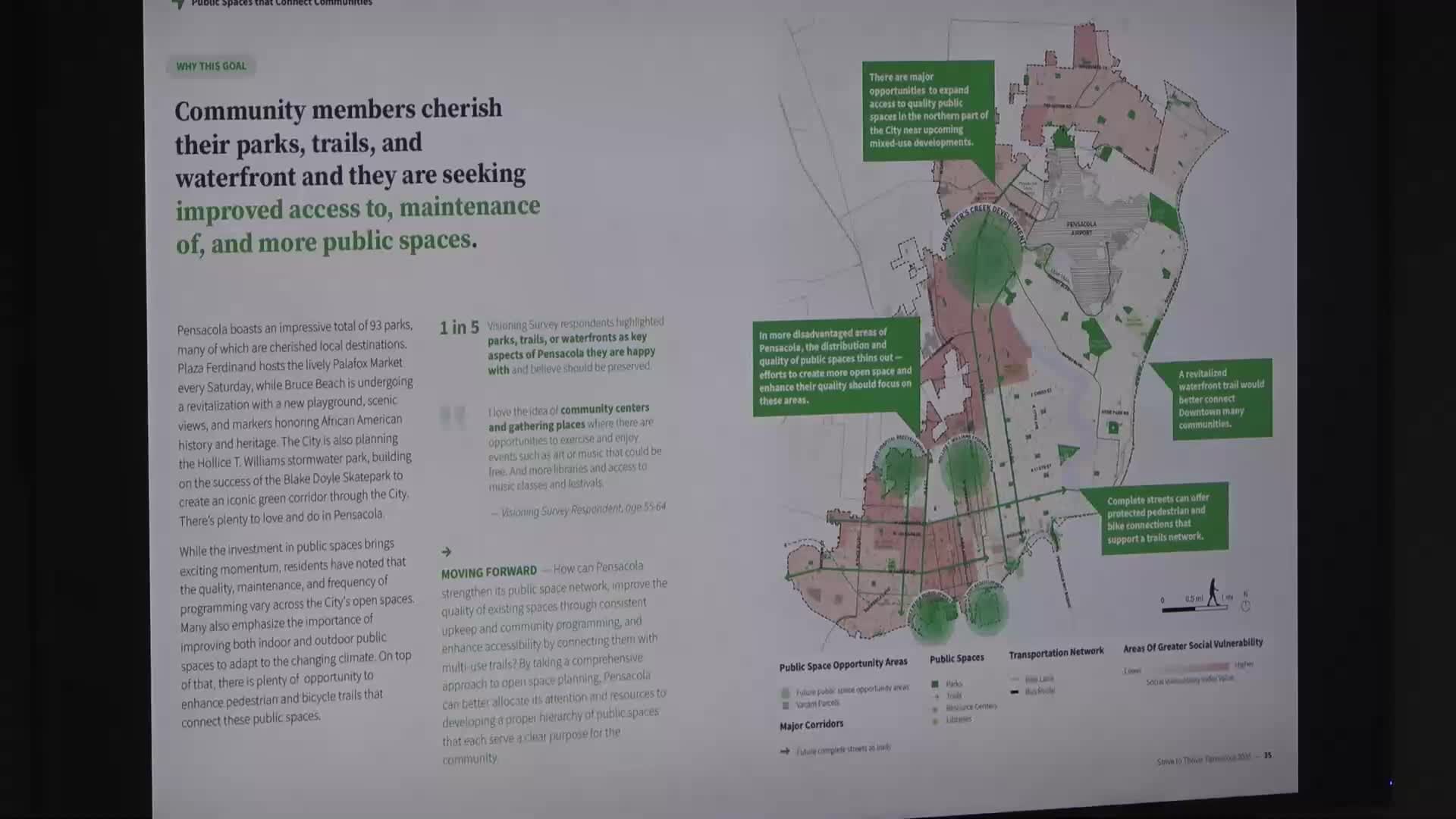City unveils ambitious plan for open space transformation
November 12, 2024 | Pensacola, Escambia County, Florida
This article was created by AI summarizing key points discussed. AI makes mistakes, so for full details and context, please refer to the video of the full meeting. Please report any errors so we can fix them. Report an error »

In a recent government meeting, city officials discussed a comprehensive plan aimed at enhancing Pensacola's open space system, which includes parks, streets, and safe access points for families and children. The proposal emphasizes the importance of integrating cultural and historical elements into urban development, reflecting community pride and identity.
Key highlights from the meeting included the need for a strategic approach to urban planning that not only focuses on traditional parks but also on creating safe corridors and mixed-use districts that foster innovation and business growth. Officials noted the significance of empowering existing community groups rather than establishing new departments, suggesting that collaboration could lead to more effective outcomes.
The plan outlines eight primary goals, which have been mapped to identify priority areas for development, particularly in the northern sections of the city and downtown. The discussion also touched on the importance of iterative planning, with recommendations for regular coordination among city departments to ensure projects align with the strategic vision.
Implementation strategies were a focal point, with suggestions for immediate actions such as street safety improvements and longer-term capital projects. The meeting concluded with a call for ongoing community engagement and evaluation of the plan's effectiveness, drawing inspiration from successful strategic initiatives in other cities, including New York.
City officials expressed gratitude for community input and collaboration, emphasizing a commitment to support the implementation phase of the plan. The meeting underscored a collective vision for a vibrant, culturally rich, and accessible Pensacola, with a focus on sustainable development and community well-being.
Key highlights from the meeting included the need for a strategic approach to urban planning that not only focuses on traditional parks but also on creating safe corridors and mixed-use districts that foster innovation and business growth. Officials noted the significance of empowering existing community groups rather than establishing new departments, suggesting that collaboration could lead to more effective outcomes.
The plan outlines eight primary goals, which have been mapped to identify priority areas for development, particularly in the northern sections of the city and downtown. The discussion also touched on the importance of iterative planning, with recommendations for regular coordination among city departments to ensure projects align with the strategic vision.
Implementation strategies were a focal point, with suggestions for immediate actions such as street safety improvements and longer-term capital projects. The meeting concluded with a call for ongoing community engagement and evaluation of the plan's effectiveness, drawing inspiration from successful strategic initiatives in other cities, including New York.
City officials expressed gratitude for community input and collaboration, emphasizing a commitment to support the implementation phase of the plan. The meeting underscored a collective vision for a vibrant, culturally rich, and accessible Pensacola, with a focus on sustainable development and community well-being.
View full meeting
This article is based on a recent meeting—watch the full video and explore the complete transcript for deeper insights into the discussion.
View full meeting